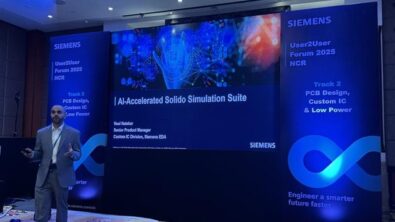The Crucial Role of Full-Spectrum Transient Noise Analysis for Silicon Success
As chips continue to push the boundaries of performance, ensuring first time silicon success has never been more critical. For analog and radio-frequency (RF) circuits noise is often the limiting factor. A recent article on SemiWiki explores why full-spectrum transient noise analysis has become a sign-off requirement for many designers. The following blog summarizes some of the key insights from this technical analysis.
Why device noise matters for circuit design
Device noise minimization is crucial for advanced analog and RF circuits, affecting key performance metrics like signal-to-noise ratio (SNR), phase noise, and bit error rate (BER). It is therefore imperative to accurately and efficiently verify the impact of device noise on these key performance metrics.
Comprehensive analysis approach
Having a robust and silicon accurate analysis engine is a minimal requirement when considering transient noise analysis. To make this method feasible, a clear methodology for setting noise parameters, determining the stop time, post-processing the output, and reporting results which account for the stochastic nature of device noise (e.g., confidence intervals) is required. Additionally, simulations must run in a reasonable time and have sufficient capacity for today’s leading-edge designs.
Benefits of full-spectrum transient noise
Full-spectrum transient noise generates random noise sources at each timestep based on foundry device model noise parameters. This ensures accurate noise analysis for a broad range of circuits up to the specified noise bandwidth set in the transient noise analysis settings. This ensures accurate and silicon-correlated noise within 1-2 dB of silicon measurements.
Siemens technology evolution to support full-spectrum transient noise
Transient noise analysis has progressed through three generations to address increasing design complexity and simulation demands. The latest implementation available in the Solido Simulation Suite, addresses needs for performance, capacity, and accuracy in the smallest geometries.
Conclusion
The article discusses the significance of full-spectrum transient noise analysis in the design of advanced analog and RF circuits, emphasizing its necessity for achieving silicon success. Methods are shown to compare transient noise results to various RF methods achieving excellent correlation. We concluded with the progression through three generations of full-spectrum transient noise, ending in the most advanced implementation available in the Siemens Solido Simulation Suite.
To dive deeper into the technical details and benefits of full-spectrum transient noise analysis, explore the full article on SemiWiki here.


